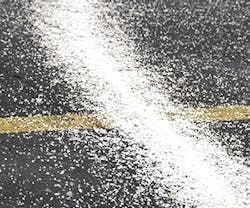Salt's Role in Building Damage Identified
The potentially caustic effects of salt accumulation on buildings are well-documented. However, researchers at the Institute for Building Materials at ETH Zurich and Princeton University recently found that certain conditions and types of salt can have an increased impact on the type and scope of damage that occurs.
Salt can enter building materials in a variety of ways, including through the gypsum and alkali sulfates present in cement, mineralized ground water that can permeate building materials, seawater spray, and de-icing agents that seep into building materials near the ground.
By repeatedly soaking limestone cubes in a solution of sodium sulfate, then rapidly drying the stones, the researchers were able to assess the levels of saturation and subsequent damage that occurred. The study found that while more salt saturation led to more damage, another key factor was the continuous wet and dry cycle, which mimics the process of salt entering building materials through rain and being evaporated by the sun – causing parts of the stonework to crumble. Temperature was also found to play a role, with the worst damage occurring at lower temperatures.
The experiments suggest that buildings existing in places with seawater spray or a large variance in temperature are at the most risk of salt damage. In less extreme conditions, such as those found in more temperate climates, it would take a larger amount of salt to cause this much damage.
Worried about your building’s integrity in the coming winter months? Take a look at these tips to help mitigate salt damage.
